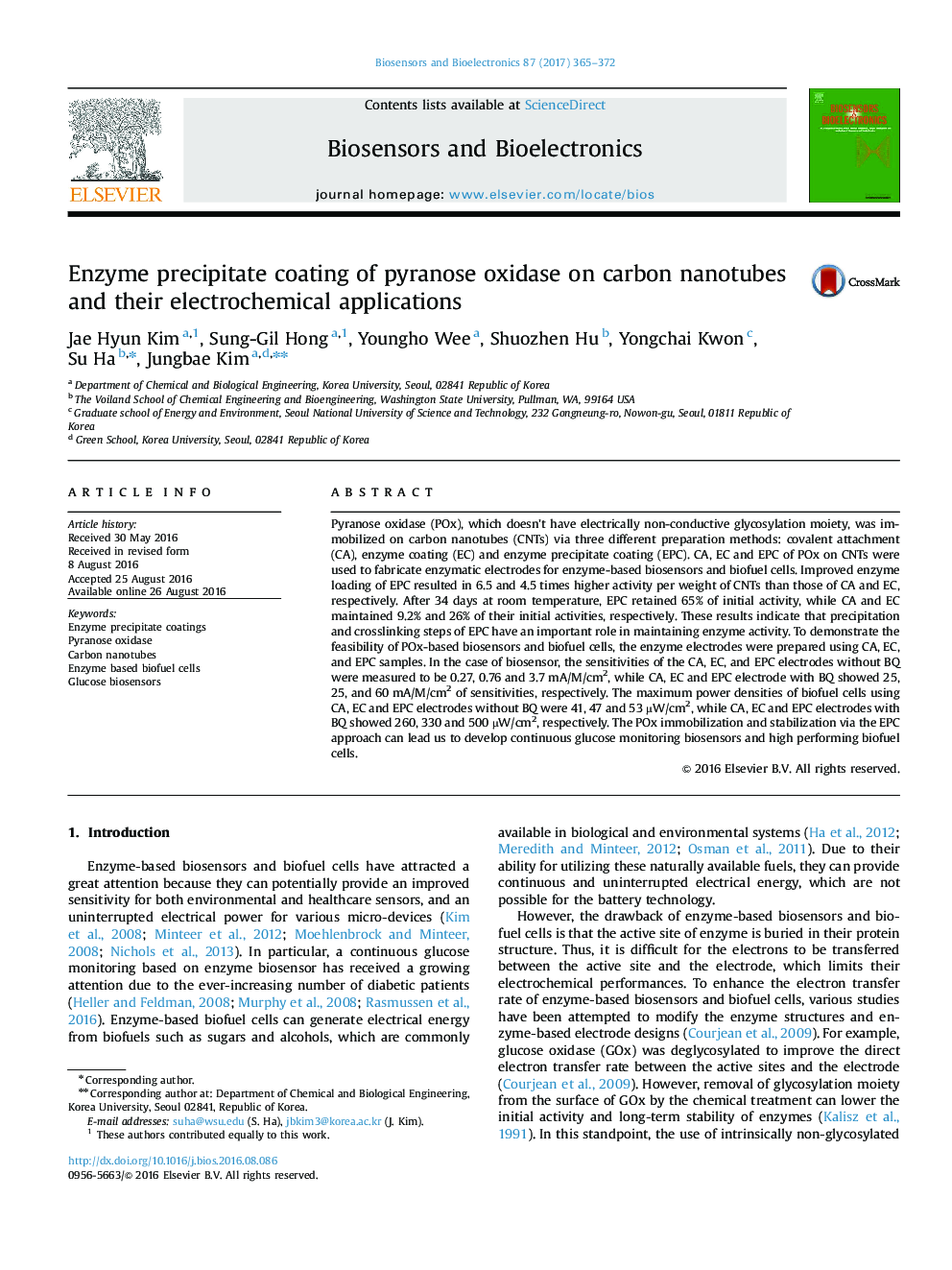| Article ID | Journal | Published Year | Pages | File Type |
|---|---|---|---|---|
| 7230145 | Biosensors and Bioelectronics | 2017 | 8 Pages |
Abstract
Pyranose oxidase (POx), which doesn't have electrically non-conductive glycosylation moiety, was immobilized on carbon nanotubes (CNTs) via three different preparation methods: covalent attachment (CA), enzyme coating (EC) and enzyme precipitate coating (EPC). CA, EC and EPC of POx on CNTs were used to fabricate enzymatic electrodes for enzyme-based biosensors and biofuel cells. Improved enzyme loading of EPC resulted in 6.5 and 4.5 times higher activity per weight of CNTs than those of CA and EC, respectively. After 34 days at room temperature, EPC retained 65% of initial activity, while CA and EC maintained 9.2% and 26% of their initial activities, respectively. These results indicate that precipitation and crosslinking steps of EPC have an important role in maintaining enzyme activity. To demonstrate the feasibility of POx-based biosensors and biofuel cells, the enzyme electrodes were prepared using CA, EC, and EPC samples. In the case of biosensor, the sensitivities of the CA, EC, and EPC electrodes without BQ were measured to be 0.27, 0.76 and 3.7 mA/M/cm2, while CA, EC and EPC electrode with BQ showed 25, 25, and 60 mA/M/cm2 of sensitivities, respectively. The maximum power densities of biofuel cells using CA, EC and EPC electrodes without BQ were 41, 47 and 53 µW/cm2, while CA, EC and EPC electrodes with BQ showed 260, 330 and 500 µW/cm2, respectively. The POx immobilization and stabilization via the EPC approach can lead us to develop continuous glucose monitoring biosensors and high performing biofuel cells.
Related Topics
Physical Sciences and Engineering
Chemistry
Analytical Chemistry
Authors
Jae Hyun Kim, Sung-Gil Hong, Youngho Wee, Shuozhen Hu, Yongchai Kwon, Su Ha, Jungbae Kim,
